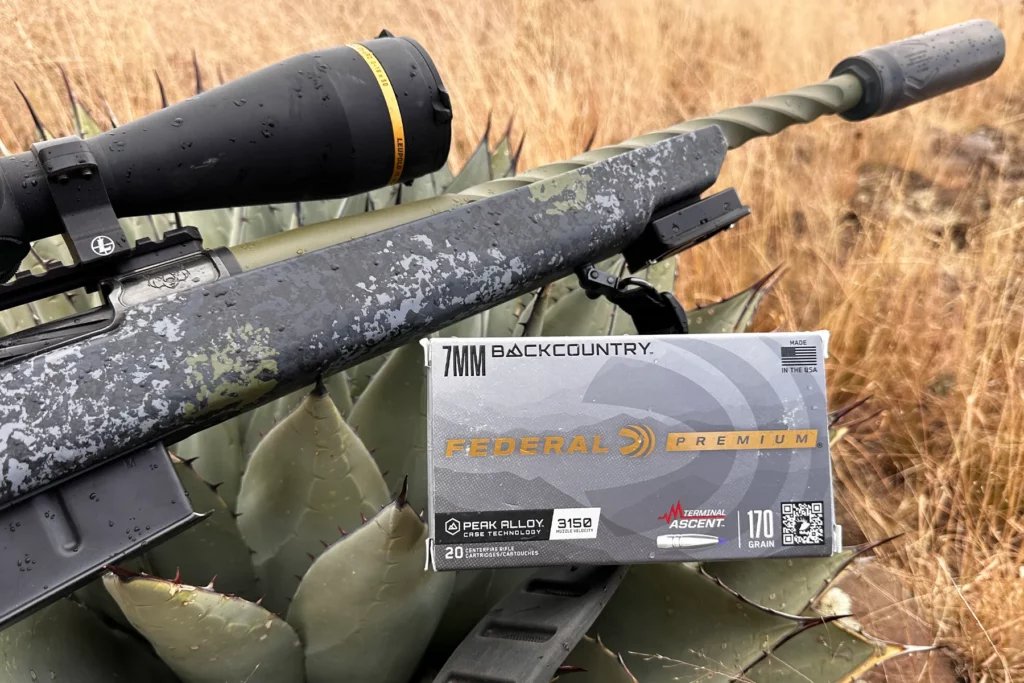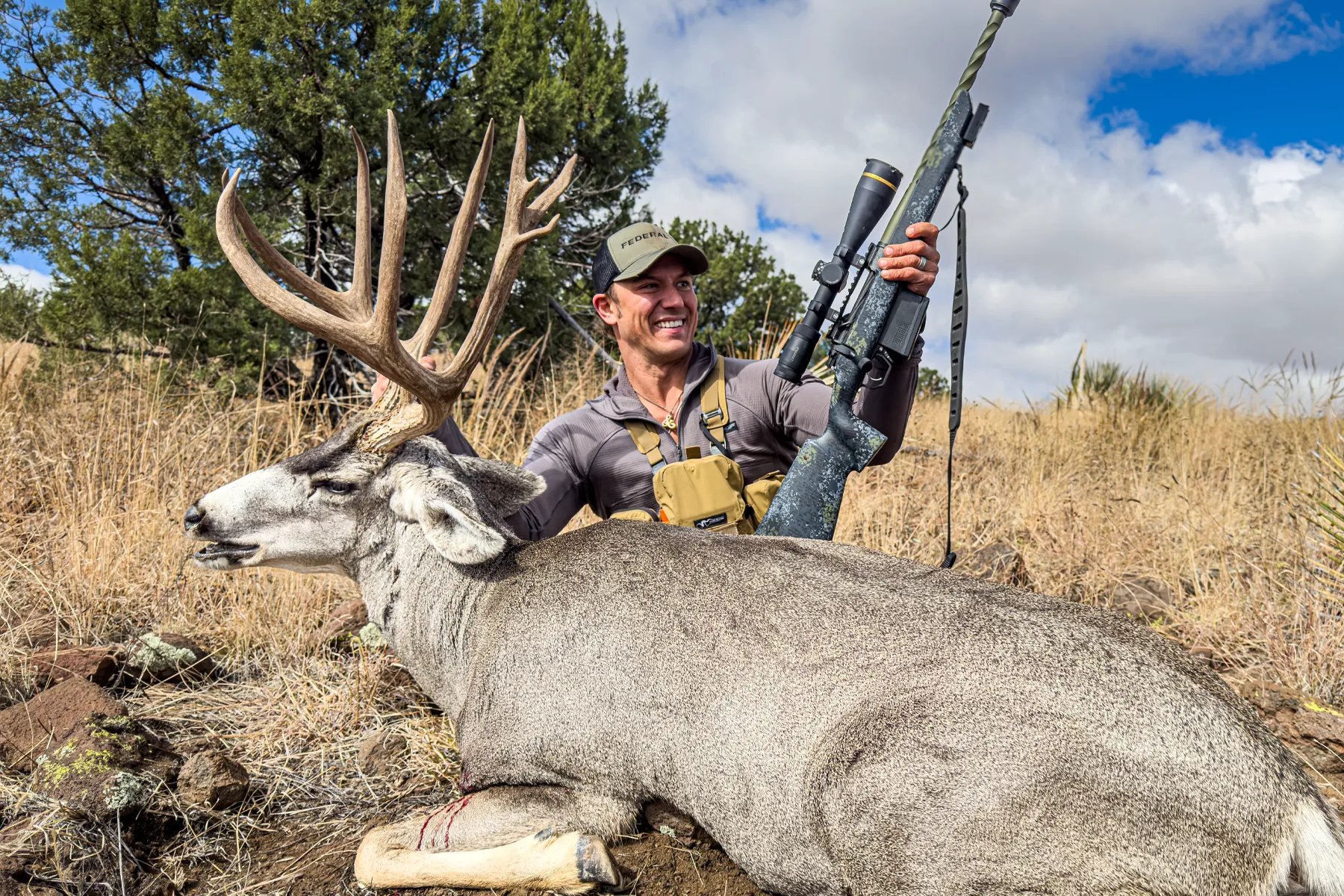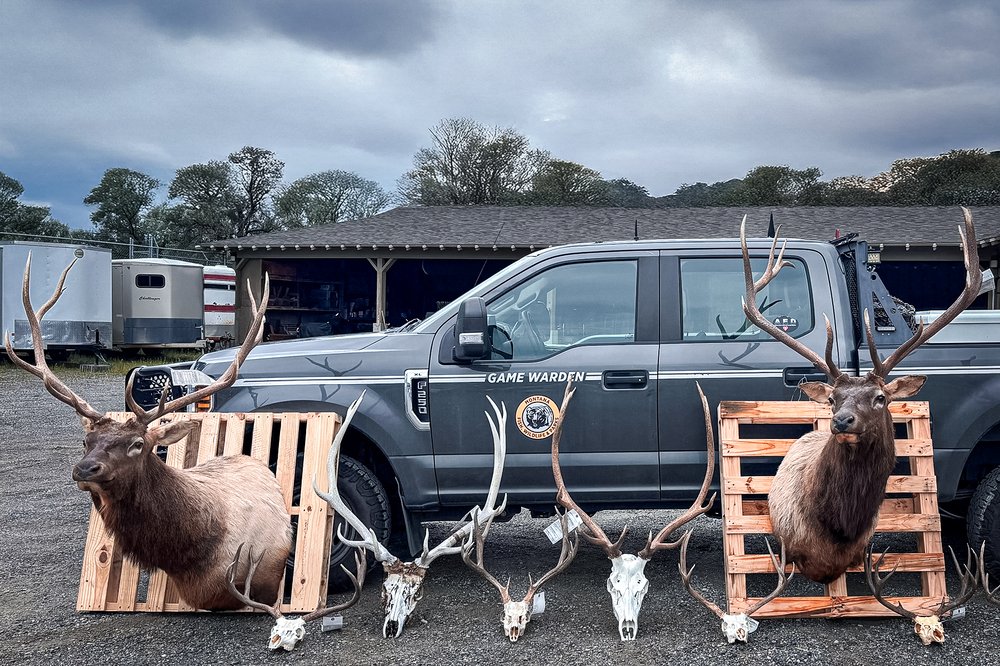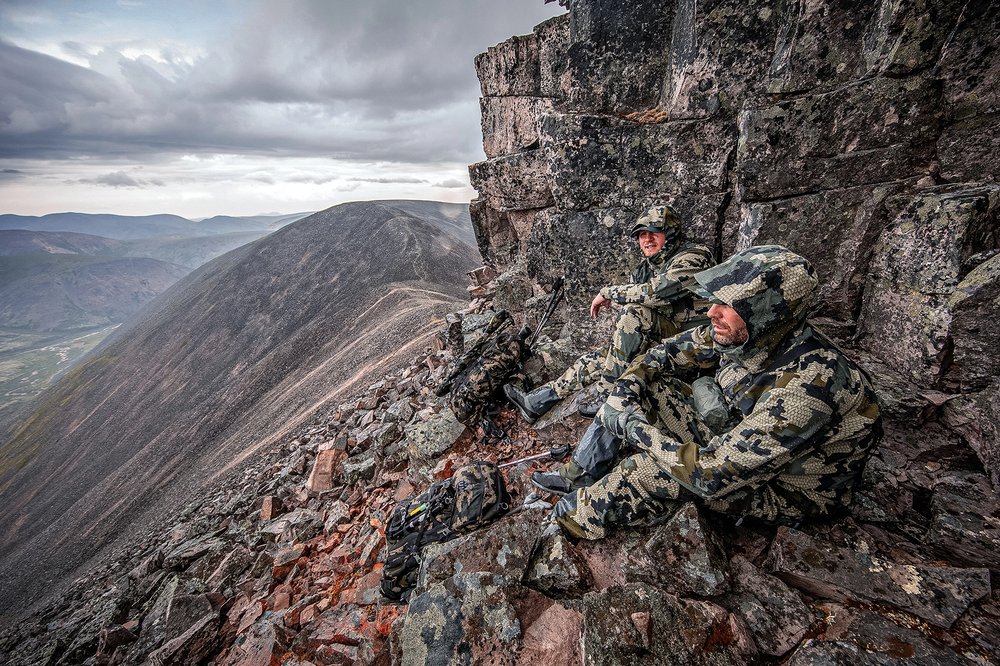High in the rugged, wind-swept expanses of western New Mexico, near the small town of Buckhorn, on the H-Y Ranch, I found myself hunting mule deer, the truck jolting over the uneven terrain as my head thudded rhythmically against the window. The air was thin, crisp with the bite of high-altitude desert chill, and the vast, sunburnt landscape stretched endlessly in all directions. Each rise and dip of the land whispered the quiet challenge of the hunt—a test of patience, skill and respect for the wild. Dust swirled as we pressed onward, the anticipation of a sighting merging with the raw beauty of the desert’s stark simplicity. Out here, beneath the endless sky, the search for elusive mule deer became more than a pursuit—it felt like communion with the land itself, where every bump in the road was a reminder of the untamed spirit that still lingers in these far-flung places.
Dream Hunt For Monster Mule Deer
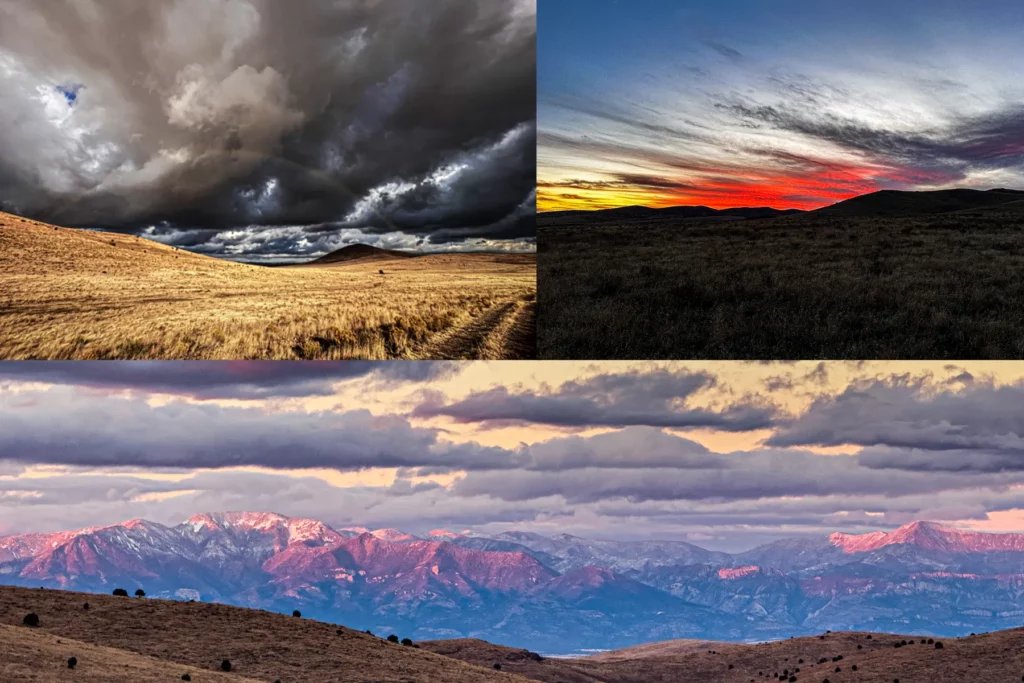
My journey there with Federal Ammunition and High West Outfitters wasn’t just a trip; it was a hunt I had dreamed of for years, fueled by a deep desire to hunt muleys in unforgiving terrain. The road to the ranch was a long one, beginning with a flight into El Paso, Texas, followed by a winding drive filled with memorable stops—dining on roadside burritos, savoring green Hatch chiles and soaking in the cultural richness of the Southwest along the way. When we finally arrived, the ranch house was a relic of the past, weathered yet welcoming, with gas lines for lanterns and power supplied only by a generator. Yet its stone fireplace, where cowboys must have once shared stories of hard days, seemed the perfect place to build camaraderie after long days in the field.

But this hunt wasn’t about the past—it was about something new. I had come not just for the pursuit of mule deer, but to test Federal’s newly introduced 7mm Backcountry hunting round.
For the first few days, we scouted by truck, glassing endless ridges and making the occasional stalk, but frustration soon replaced excitement. To me, hunting has never been about idly driving from ridge to ridge. It’s about effort, persistence, and the unshakable belief that a true hunt is earned. And so, after days of distant sightings and fruitless miles, my guide, Blake Olsen, and I finally agreed—it was time to leave the truck behind and hunt on foot, the way it was meant to be.
The Mule Deer Stalk Begins
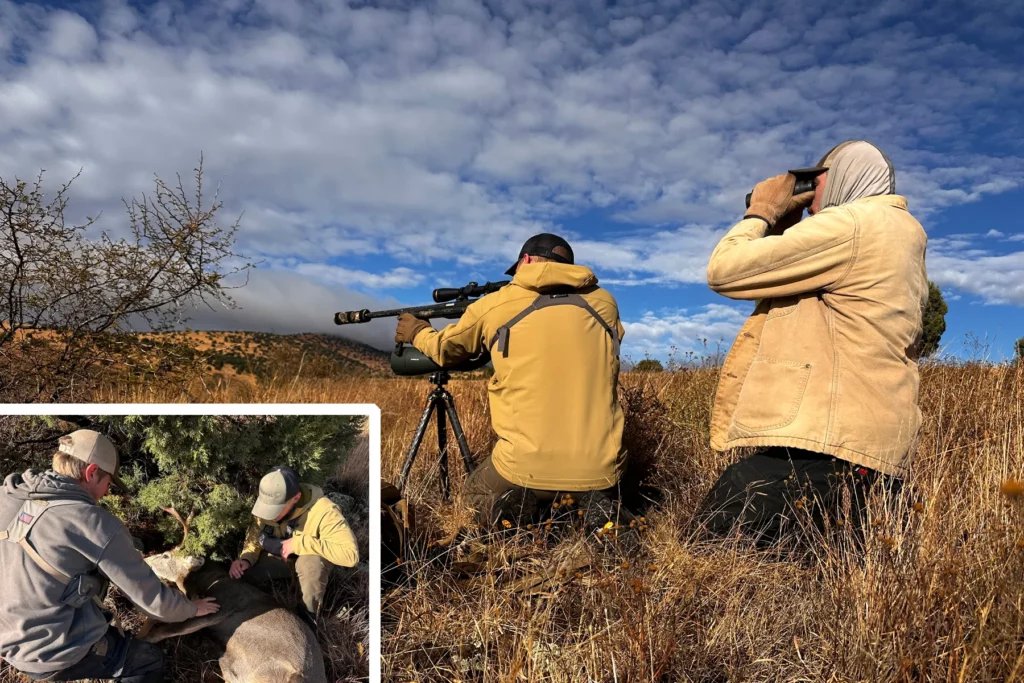
The truck’s engine fell silent, and with it, the comfort it provided faded into the vast quiet of the New Mexico backcountry. As we shouldered our packs and said our goodbyes to the vehicle’s cushioned seats and warm playlist hum, the hunt truly began. I traveled light, knowing camp awaited us each evening. My frame pack carried only the essentials: a Swarovski spotting scope, game bags for the harvest, a Nalgene bottle, a MTN OPS bar, and trekking poles for the pack-out. Across my shoulder rested my Horizon Firearms Wombat, chambered in the new 7mm Backcountry.
The landscape opened wide before us, painted in hues of pale sage and scattered cedar, where ancient volcanic stone whispered stories of time. We moved with purpose, the crunch of boots on rocky soil blending with the occasional wind gust through the desert brush. Along the way, we stirred a few lingering bull elk, long past the rut, their shadows slipping ghostlike through the undergrowth. There was a stillness to the wilderness that felt almost sacred, a silence broken only by the occasional exchange of words or the scrape of loose gravel underfoot. Yet, there was no rush, no urgency—just the steady rhythm of the hunt and the wild beauty surrounding us. We paused from time to time, not just to glass the ridges but to collect bits of quartz and mineral stones scattered beneath our feet, small souvenirs of a place so raw and untamed it demanded reverence.
But as the miles passed, something deeper unfolded. The hunt became more than a pursuit of game; it became a test, a shared experience of effort and perseverance. By the time we had hiked 4, maybe 5 miles into a remote valley untouched in the guide’s memory, it became clear why few ventured this far. Most guests, he explained, preferred the comfort of glassing from the road, content to let the game reveal itself rather than seeking it out.
But mule deer, especially the great ones, don’t grow old by making mistakes. They avoid the roads, the open ridges, the easy kills. True trophies live in the hidden folds of the land, where the wind carries no human scent and the cover conceals them from casual eyes.
The Backcountry Mule Deer Payoff
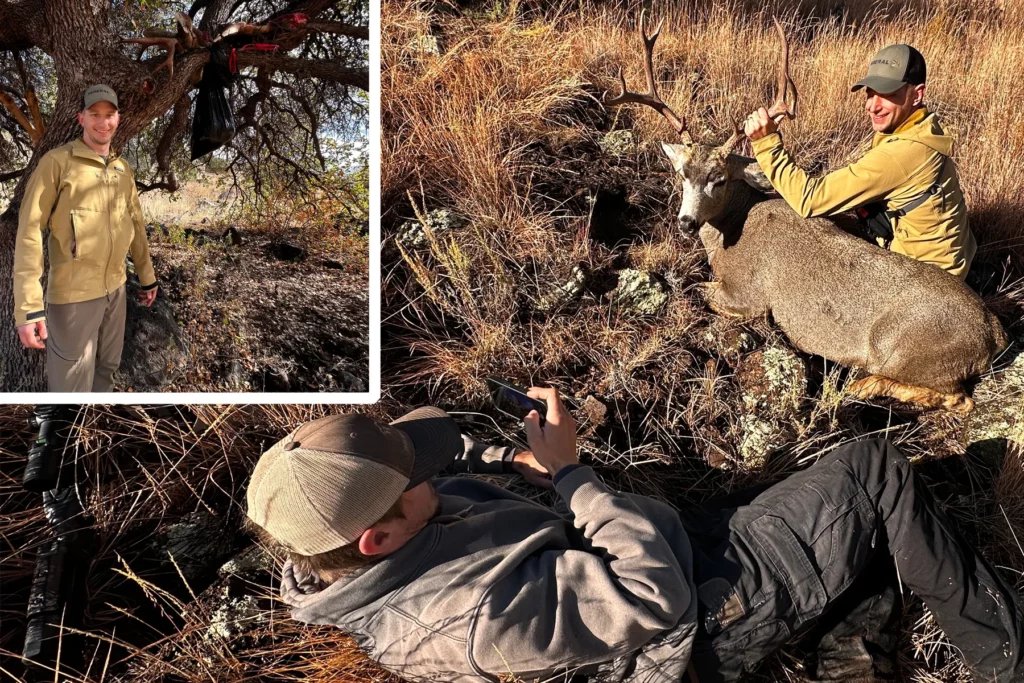
As the sun rose higher in the New Mexico sky the wilderness seemed to settle into a hushed stillness. Hours into our hike, the quiet was broken by the muted motioning of my hunting partner, Brad Abramowski, who had spotted movement through his binoculars alongside our guide. A mule deer stood, partially concealed among the brush. It wasn’t quite the trophy I had envisioned for myself, but it fit Brad’s expectations perfectly. For him, this was more than just a hunt—it was the ultimate test. Brad was the engineer behind the 7mm Backcountry, and this was its real-world proving ground. The work he’d poured into its design had brought us to this very moment.
I shifted quietly, positioning myself behind a twisted cedar tree whose branches had been freshly raked by the antlers of a passing bull elk. A perfect 200-yard shot rang out, clean and ethical, and dropped the deer just above the valley floor.
We moved toward the downed buck, each step measured, the adrenaline fading into a profound sense of respect. As we knelt beside the animal, it became clear that this moment was about far more than the harvest. It was about the journey, the shared experience of effort and endurance in a place where nothing comes easy. Out here, we had chosen the harder path—there’s no pride in shortcuts.
The Hunt Continues
The shot had been taken, the deer was down, and the silence of the New Mexico backcountry seemed even more profound as the weight of the moment settled over us. After taking a few photos with the deer, the hard work began. This wasn’t the end of the hunt—it was the next chapter in a process that required just as much care and patience as the pursuit itself. I reached for my Montana Knife Company Speed Goat and Havalon, the blades sharp and ready for the task ahead. Together, we began the meticulous work of quartering the animal.
We were deep in the valley now, tucked into a natural pocket of the terrain where the wind died down, leaving the air still under the midday sun. The landscape, so vast and rugged just hours earlier, now felt intimate as we worked together, side by side, hands busy. The animal was broken down—each quarter separated, trimmed, and placed into game bags. It felt less like work and more like a ritual, a bond not just between us as hunters but with the land itself.
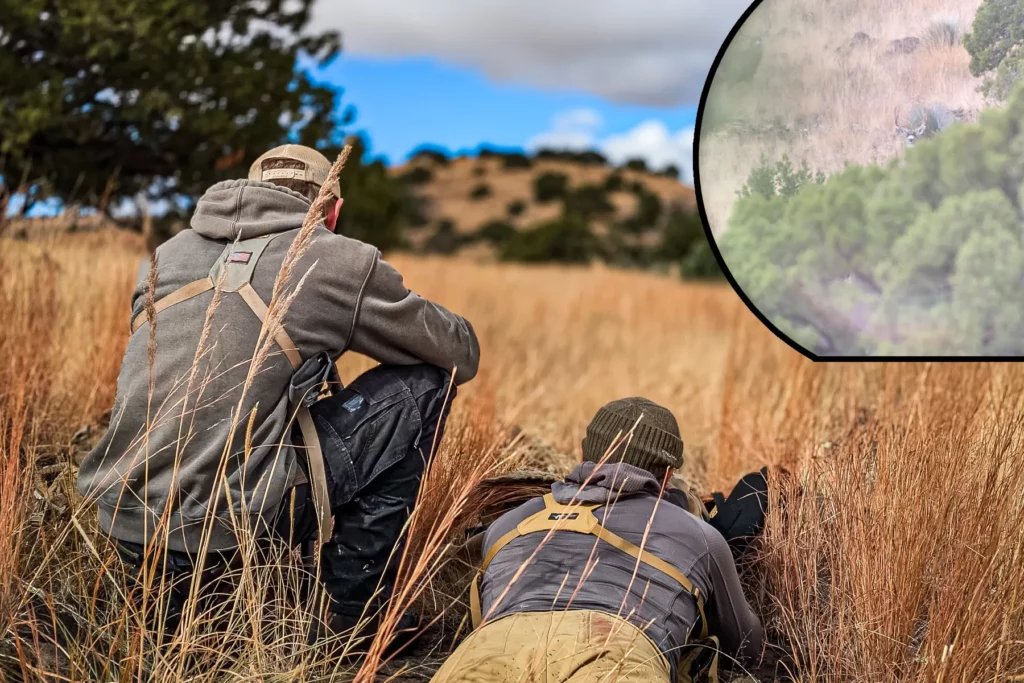
After breaking down the deer, we turned our attention to protecting the harvest. The game bags, heavy with fresh meat, along with the cape and head, were hoisted high into the branches of a weathered scrub tree along the dry creek bed that cut through the heart of the valley. Suspended well above the reach of scavengers. The same land that had shaped this animal would now guard its remains, as we prepared for the next chapter of the hunt.
As we rested, the realization struck us: we were now closer to camp than to the truck, the ridgeline above offering the perfect vantage point for glassing the surrounding valleys. The decision was made. Rather than retrace our steps, we would climb higher, pushing deeper into the search for another opportunity. If luck favored us, we could pack both animals directly back to camp, sparing the long trek to the truck while staying immersed in the hunt a little longer.
The climb was steady—nearly a mile of uphill grind tested us. Then something caught my eye and brought everything to a sudden halt. Just ahead, tucked low in the tall grass, were what I first believed to be two young bull elk bedded down. But before I could voice my thoughts, our guide, sharp-eyed and seasoned from much time in the field, signaled. These weren’t elk. They weren’t young animals either—they were mature mule deer bucks. Massive ones. Only 75 yards away.
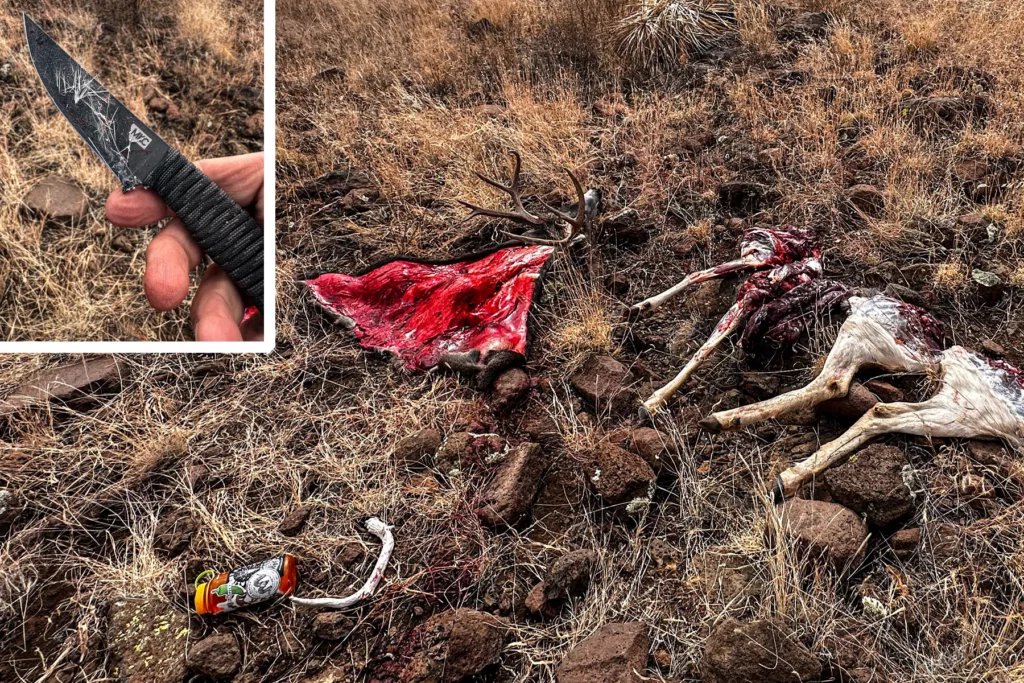
In the same breath that realization hit, the bucks spotted us too. A heartbeat later, they were on their feet, exploding from cover with powerful strides, their hooves tearing through the brush as they bolted up the ridge. Without thinking, we dropped to the ground, sinking low into the dirt. We scrambled for optics, pressing glass to our eyes, straining to catch their movement as they disappeared between patches of trees. Then, just when it seemed like the moment was over, the unexpected happened—they stopped.
At roughly 250 yards, the three bucks paused broadside, their heads turning back toward us. For a moment, neither we nor the deer moved, locked in a silent standoff. It was as if their instinct to flee clashed with their curiosity, unsure of what we were, yet drawn to look back. And that brief hesitation—those precious few seconds—offered the opportunity we had been hoping for.
Taking A Survivor Buck
Among the trio, one buck stood out. His antlers rose high, deep-forked and massive with heavy, weathered mass—the kind of rack built by age, experience, and seasons of survival in the unforgiving wild. He was the deer I had come for.
The guide whispered his position, voice steady, calm—but yet from where I lay, the massive buck was completely hidden from my view. I strained to reposition, but the other two deer were locked onto us, their eyes searching, their muscles coiled with tension, ready to vanish at the first sign of danger. One wrong move, the slightest shift of my body, and the entire group would be gone in an instant.
In the stillness of that moment, one truth became crystal clear: the hunt was far from over—this was the test, the final challenge where experience, patience, and careful calculation would decide the outcome.
The whisper from our guide was calm, measured, and precise—yet it felt almost impossible given the tension of the moment. “Here’s what you’re going to do,” he said, voice barely audible over the pounding of my heartbeat. “You’re going to crawl over to me, rest your rifle on top of my spotting scope, aim 5 yards down and to the right. When you do, you’ll see him. He’s standing there, half behind a cedar tree.”
I blinked, absorbing his words, the weight of the moment pressing heavily on my chest. Crawling into the open felt reckless, almost desperate. But the guide’s confidence grounded me. He had seen it clearly—he knew the shot was there. Still, I repeated his instructions back to him in a whisper, breaking down each step, each movement, mentally rehearsing until the sequence felt automatic. There could be no hesitation. No second chances.
Upon his signal, we moved.
Shifting my leg just far enough to slide over without disturbing the landscape around me, I moved to my guide. He shifted slightly to the left, making room for my rifle as I settled it atop his spotting scope. The gun rested steady, dialed perfectly for distance. I adjusted my aim just as instructed—down and to the right.
And there he was.
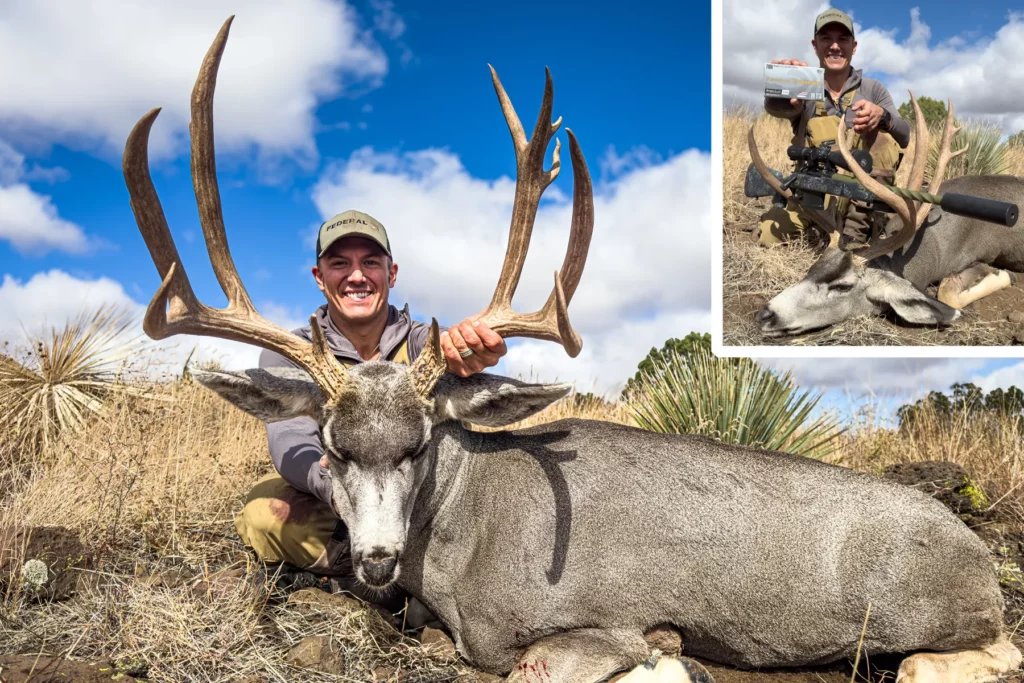
The massive mule deer stood broadside, his powerful frame partially obscured behind the limbs of a cedar tree, but his vitals perfectly framed. Time slowed. My breath narrowed. I felt the weight of every moment, every mile hiked, every decision that had led to this point. The shot broke clean.
The sound of impact was immediate—solid, unmistakable. The buck took no more than 10 staggering steps before he folded motionless.
The 7mm Backcountry had performed flawlessly. It was accurate, swift, and deadly. At 250 yards, the shot felt almost too perfect—like I had somehow cheated with a cartridge engineered for extreme distances, rated for precision out to 1,400 yards. But as I watched the mule deer fall, I knew the success of this moment wasn’t owed to ballistics alone. It was the effort, the patience, and the unwavering focus that defined the hunt from the very first step into that country. And in that moment, the reward felt earned.
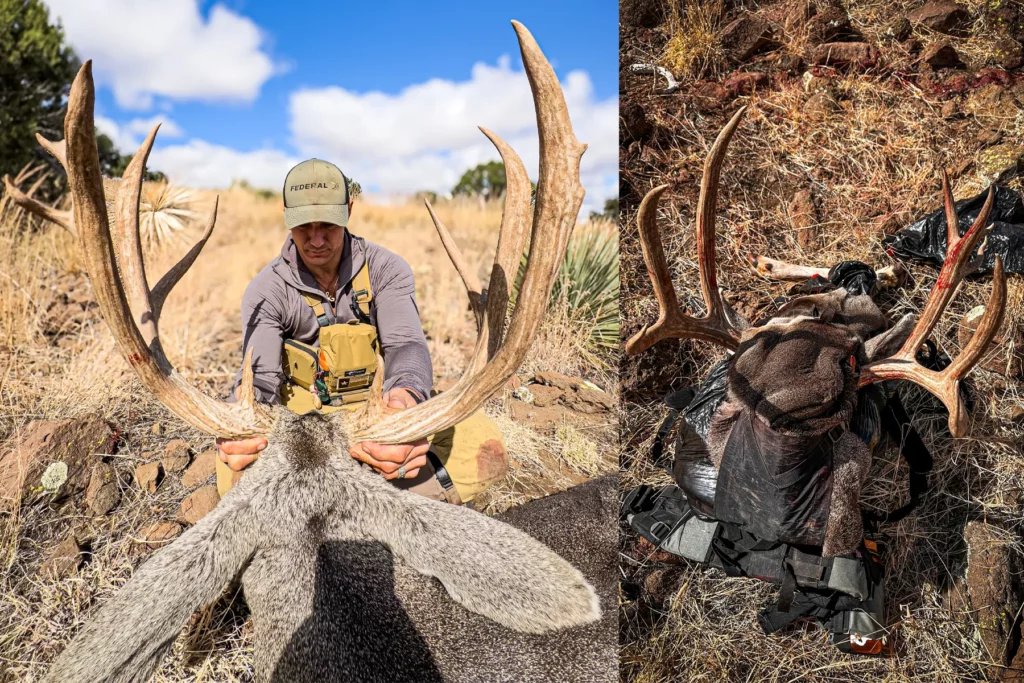
While Brad and our guide headed back to retrieve the first mule deer, still hanging safely from the scrub tree a mile away, I remained behind to break down the second buck. My blade moved deliberately, quartering the animal with quiet respect, each cut a reminder of the responsibility that follows the shot. The meat was carefully packed, the cape and antlers secured. By the time Brad and the guide returned, having covered an additional 2 miles, the job was nearly done—every piece of the harvest packed and ready for the hike out.
We stood together on the ridgeline, gazing toward camp, just over a mile away as the crow flies—almost entirely downhill. Our packs strained under the weight of success, each loaded with meat and crowned with mule deer antlers protruding. The weight dug into our shoulders with each step, but we felt it with a sense of pride. Brad and I, proudly pressed forward, embracing the burn. The thought of walking back into camp with not one but two mature bucks after days of hard hunting fueled us with determination.
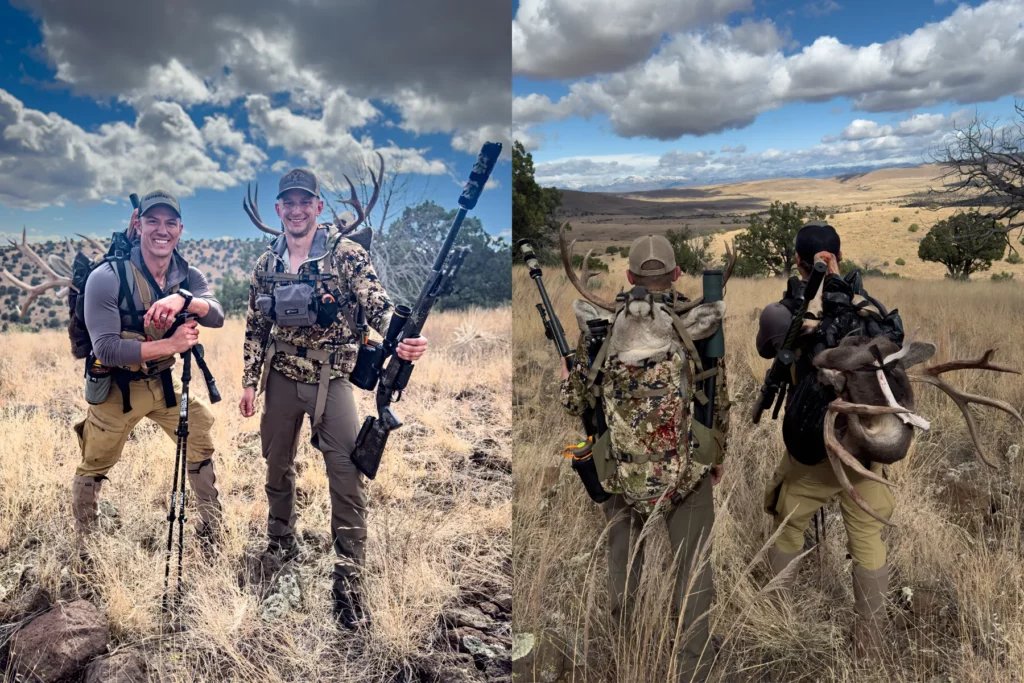
Backcountry Ruminations
As we neared the ranch house, we could see some of the group gathered behind the cabin, sharing stories and waiting for their turn to fill a tag. Smiles spread across their faces as they spotted us descending the ridgeline. We felt like returning heroes, not because of the trophies on our backs, but because of what they represented—the challenge, the effort, and the undeniable satisfaction of having done it the hard way.
And through it all, one thing stood out—the 7mm Backcountry round had performed flawlessly. It was designed for precision, built for moments exactly like these, and it delivered with absolute perfection. It had not only earned my trust but has become my personal go-to hunting round, a choice solidified by the results of this hunt.
There’s not much more I could ask for from an experience like this. The guide’s expertise, Brad’s innovation, and Federal Ammunition’s relentless pursuit of excellence had all come together in one unforgettable hunt. The land had tested us. The animals had challenged us. But with effort, respect, and the right tools in hand, we had earned the reward. And that, in the end, is what hunting is all about.
Check out this video message from John Radzwilla.
